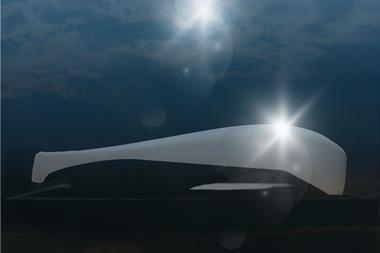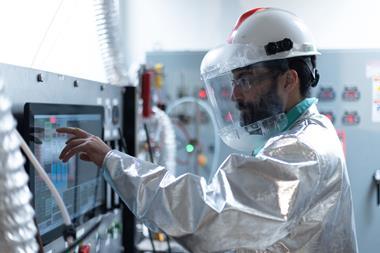Composites are being promoted as the ultimate impact-resistant material, but Altair and VW found that aluminium was the better solution for B-pillars.
Part of Bentley’s parent company, Volkswagen Group Research, recently undertook a project intended to study the viability of composites as alternatives to metal, especially aluminium, in load-bearing applications. It is never as simple as just substituting one material for another, especially when the new material is as novel as carbon fibre composite, so the research group was also tasked with developing and specifying effective design, development and manufacturing approaches for future components made of composite, as well as design validation through simulation – in short, to create a protocol.
The project was conducted with the support of Altair ProductDesign and its HyperWorks software. In order to make the project as effective as possible, the study based itself on an actual existing component: the B-Pillar in the D3 series Audi A8. As well as being able to make direct, real comparisons, the team would have the benefit of accumulated experience, as well as performance and CAD data.
Performance variables
Carbon fibre has different mechanical performance characteristics to aluminium, which the existing B-Pillar was made of. The component is a crucial element in the car’s safety cell; it is intended to be highly impact-resistant but it also has to deform as it manages the energy in certain types of crash. Altogether, the potential variables, from the required performance characteristics, to the topology, number of layers of material, its orientation, patches and so on, would take an enormously long time to calculate. The team overcame that – and set a new design paradigm – by reducing the number of considerations in the earlier in part of the development process, and going into greater detail when the total number of variables had been reduced. The process became analogous to a longlist/shortlist approach, where contenders for an award are examined in greater detail once the total numbers have been whittled down.
Topology optimisation
The engineers undertook a topology optimisation, analysed the basic structure of the component, and studied load paths and orientation of the different layers, as well as considering possible reinforcement with an aluminium rib. Material optimisation was generated by finite element analysis, followed by a triple-step optimisation. The first was a ‘freesize’ process, which studied and defined the orientation of individual layers. Secondly, size optimisation, defined the number of layers needed; then shuffle optimisation determined the stacking sequence. OptiStruct, HyperWorks’ optimisation tool software that ran this part of the project.
The composite component…
The project team determined what was believed to be the ideal structure for the B-Pillar, having exhaustively examined fibre orientation, layers and patches, whether over-all or local. They then developed a similar composite B-Pillar, which did not have any aluminium reinforcement, with stiffness equivalent to the metal version but 40% lighter. The aluminium rib was eliminated from the final prototype because of cost and ease of manufacture.
…sees dreams turn to dust
Everything looked, initially, to be very promising. The project tests found that the composite component could absorb up to 25% more energy than the metallic equivalent, but with 30% less mass. But there was a crucial and – for the composite component – ultimately fatal difference. It showed deformation up to 30% beyond acceptable. This could have been remedied by including an aluminium rib, which would manage deformation more effectively but the weight advantage would be significantly reduced. While the project succeeded in developing new and more effective procedures for designing, developing and validating new components, and their protocols could be used on all materials, it was unable to create a new composite part – the existing aluminium one performs better, in these circumstances. Which prompts the question; how can McLaren make a car from carbon fibre composite, if a company like Audi cannot? “While the passenger tub of the McLaren MP4 12C is made of composite, there are aluminium structures attached to it that are designed to absorb energy in the event of a crash, and thus protect the integrity of the tub,” says Tony Norton, of Altair. “Metals deform and concertina; composites ultimately turn to dust. It is a question of managing the process. We found that we can manage impact loads very well with composite; it is the deformability that is the problem.”





































